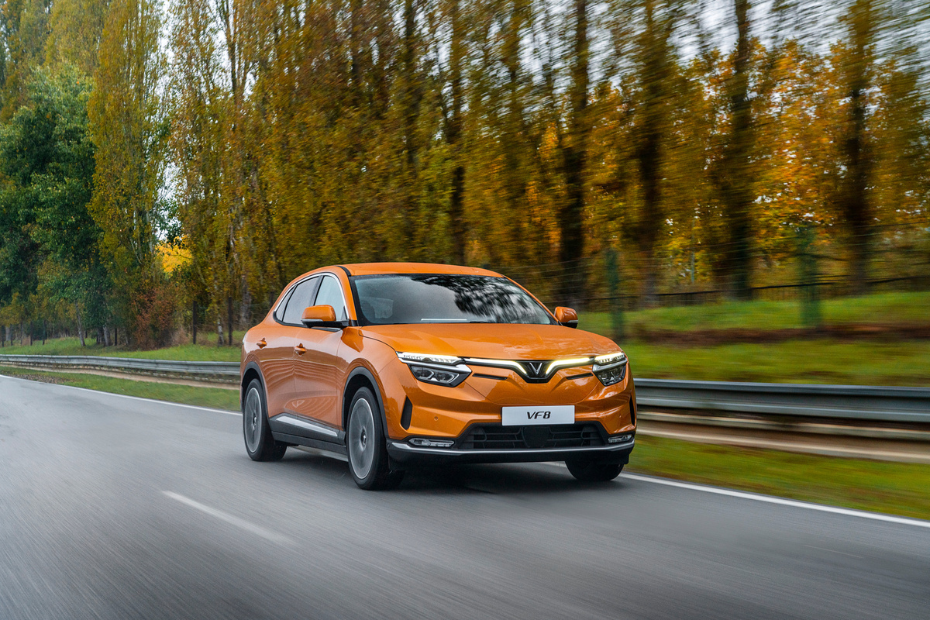Ten Must-Have Tech Options For Your Next Car

In the early 2000s, most advanced tech and convenience features were limited to ultra-luxury and high-performance vehicles with price tags upwards of $75,000. As technology has become a much larger part of our everyday lives, nearly all automakers have begun adding a significant number of these features to all their vehicles. These days, you can get a slew of modern convenience options on new cars for much less!
When it comes to vehicle tech and electronics, you really don’t know what you’re missing until you have them and are able to use them on a regular basis. They make driving immensely more entertaining and can often take the boredom out of driving long distances on road trips or even just your daily commute. In this blog, we’ll detail the top 10 tech features you must have in your next vehicle and why they’re so vital.

Heated Seats and Steering
Heated seats and steering are essential for North American drivers in the winter. Those who have driven with leather seats understand the struggle of driving for several minutes in a freezing cold seat while holding onto an equally frigid steering wheel. Although the heater may increase the temperature of the vehicle’s cabin, it can take some time for heat to transfer to both the seats and the steering wheel, making for an uncomfortable ride. With just a click (or two) of a button, select vehicles allow you to instantly heat both up to ensure a smooth and pleasant ride.

Apple CarPlay and Android Auto
Smartphones have become staples in the lives of most people in the Western world. Before Apple CarPlay and Android Auto were introduced, consumers often complained that their vehicle’s multimedia systems didn’t connect well with the smartphone they used on a daily basis.
Many wondered why automakers didn’t make infotainment systems sync up with their devices more seamlessly. Luckily, Google and Apple (in partnership with automotive software developers) have solved that problem.
Once connected to a CarPlay- or Android Auto-equipped vehicle, your multimedia screen will display an interface that closely resembles the one you’re used to on your smartphone itself. The system uses large, easily discernible icons and uses voice control to allow drivers to check their text messages, deploy navigation applications, and listen to content from third-party apps like Spotify, Pandora, and iHeartRadio. Apple and Google have licensing agreements with most popular car manufacturers, such as Chrysler, Ford, GM, Audi, and Mercedes-Benz.
CarPlay and Android Auto are generally only available on vehicles made after 2016, but consumers looking to purchase an older vehicle can find aftermarket solutions for as little as $200.

Power Trunk and Liftgate
While often overlooked, power trunks and liftgates are very convenient, especially on those grocery trips where you have both hands completely full of your purchases. Many of these systems allow you to simply wave your leg under the rear of your vehicle; your trunk or liftgate will open, allowing you to place any items you may be holding inside it. Older iterations of the power liftgate and trunk are activated by pressing a button on your remote to activate the hatch.

Wi-Fi Hotspots
Yes, modern cars now come equipped with wi-fi hotspots! Families who take long road trips will absolutely love the ability to make hands-free calls, listen to satellite music, and even complete a few work assignments from a cell phone, laptop, or tablet. Previously only available on full-size SUVs such as the Chevy Suburban or the Mercedes-Benz GLS, wi-fi capabilities are now built into smaller vehicles such as the Chevy Malibu, Dodge Dart, and Chrysler 200. These hotspots generally come with a free trial period and charge a monthly fee of around $20 to $40 to continue service.

Smart Suspension
More and more passenger vehicles use a smart suspension to provide better handling and a much better driving experience. Traditional suspension systems consist of coil springs, shock absorbers, and linkages to maintain wheel oscillation, vibration, and bounce while compensating for irregularities in the road. With smart suspension systems, coil springs are replaced by airbags to support the weight of the vehicle These airbags and shock absorbers are electronically controlled to respond to changing road conditions and passenger load. Usually, the driver can set the suspension’s ride height; alternatively, the vehicle will automatically adjust based on the specific situation. While you may not fully understand the technology behind smart suspension, you’ll definitely feel the difference on the road.

Smartphone App Integration
From locking and unlocking doors to engaging vehicle lights, several automakers have developed mobile applications that allow you to control many aspects of your car from the palm of your hand. Many of these apps are also attached to GPS trackers in your vehicle, allowing you to find your car in a busy parking lot or locate it quickly in the unfortunate event it has been stolen. Smartphone app integration is still in its early stages as far as adoption; however, most new vehicles will undoubtedly possess this feature in the next five years.
Wireless Smartphone Charging
Wireless smartphone charging has been available for the iPhone since 2017 and for Samsung devices since 2014. If you replace your phone more often than you replace your car, you likely have your hands on a device that supports wireless charging as we speak. While nearly all modern vehicles have USB ports, wireless charging is a feature that has been slowly making its way into the automotive market for the past five years. This feature allows for a much cleaner interior, as drivers no longer need to keep messy-looking charging wires hanging from their infotainment system or centre console. All you’ll need to do is set your phone on the charging pad, and it will charge itself—no cords needed!
Video Rear-View Mirror
All drivers have struggled with placing their rear-view mirror in the perfect position to see what’s behind them. Maybe you’ve stuffed your car full of luggage for a long road trip and have no way of seeing what’s behind you, rendering your traditional rear-view mirror useless. Luckily, both these challenges are solved with video rear-view mirrors. Rather than relying on your rear window to provide vision, a video rear-view mirror uses a camera mounted on the back of the vehicle to display what is directly behind your car. This feature also allows you to toggle between the video setting or conventional mirror view, depending on which one you want to use.

Heads-Up Displays
Heads-up displays (HUDs) have transformed the way drivers are able to check important vehicle information while driving. They are generally projections that show up within a small surface area on the windshield, right above the steering wheel. HUDs can show you everything from speed and navigation directions to what song is currently playing on the infotainment system. HUDs were previously only available in luxury vehicles but have slowly made their way into other brands.
Tech and convenience features have come a long way since the first automobiles appeared in the late nineteenth century. Nowadays, these seemingly optional features are impossible for many drivers to live without. While most of the above features aren’t directly connected to safety, they will certainly make trips that are hours long feel like minutes due to increased comfort, better entertainment, easier access to information, and more. Be on the lookout for the above features when you’re in the market for a new vehicle!
Remote Start
Have you ever wished you could warm your car up before you enter it, so you can simply drive off in comfort when you’re ready to leave? That’s exactly why remote start was invented! Remote start allows drivers to press a button on their key to start the car from a distance. This way, you won’t need to worry about waiting for the engine to warm up to use the heater: it will be ready for you as soon as it’s time to leave for your destination. There’s nothing incredibly fancy about remote start. In fact, the technology has been around since 1985, but it’s definitely one of those features you’ll never want to be without once you get used to it.
Bạn cần đăng nhập để tương tác với nội dung này: Đăng nhập.


